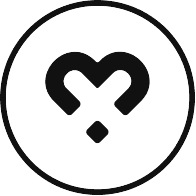What Does Heteroflexible Mean?
Heteroflexibility describes a sexual orientation in which someone is primarily attracted to people of a different gender but experiences occasional attraction to people of the same or other genders. Unlike bisexuality or pansexuality, where attraction to multiple genders is a consistent and integral part of identity, heteroflexibility emphasises heterosexual attraction with occasional, situational, or less frequent attraction outside those bounds.
For many, being heteroflexible means embracing the freedom to explore occasional connections with others without feeling the need to overhaul their identity or label. It’s about acknowledging that attraction can be complex and fluid while still feeling comfortable with the identity that reflects their overall experience.
Heteroflexible vs. Bisexual and Pansexual: Understanding the Nuances
Heteroflexibility, bisexuality, and pansexuality all recognise that attraction isn’t limited to one gender—but they differ in how people experience and describe that attraction.
Pansexuality: Pansexuality describes attraction to people regardless of gender, often emphasising that gender identity doesn’t play a defining role in their connections. Pansexuality is less about gender and more about the individual.
Bisexuality: Bisexual people experience attraction to two or more genders, including non-binary and trans people. The term bisexual has existed for decades and predates pansexual. Some prefer to continue identifying as bisexual because it aligns with how they’ve understood themselves for years.
Heteroflexibility: Heteroflexible people are mostly attracted to one gender, often the “opposite” of their own, with occasional or situational attraction to others. Think of it as being “mostly straight but not completely” This label acknowledges a spectrum of attraction without suggesting consistent openness to all genders.
All three identities share the common ground of sexual fluidity and inclusivity, each offering people a way to express their unique experiences of attraction.
What Heteroflexibility Looks Like in Practice
So, what does it actually mean to be heteroflexible? For some people, heteroflexibility involves a primarily heterosexual orientation but with rare moments of attraction to other genders. These moments might feel significant without altering their overall sense of self.
Occasional Attraction: Imagine someone who identifies as straight but experiences a deep connection or a fleeting romantic spark with someone of the same or another gender. For a heteroflexible person, these moments might feel like an extension of their identity rather than a complete redefinition.
Contextual Exploration: Some heteroflexible individuals notice that their same-gender attraction emerges in specific situations—like in safe or experimental environments—or during a period of personal growth.
Casual Exploration: For others, heteroflexibility might involve occasional same-gender or non-binary experiences without a need to adopt a label like bisexual or pansexual. It’s less about changing their identity and more about honouring the fluidity of their attractions.
The key to heteroflexibility is its openness to the complexity of attraction while remaining grounded in a predominantly heterosexual orientation.
Why Some People Identify as Heteroflexible
So, why might someone choose to identify as heteroflexible rather than bisexual, pansexual, or even straight? The reasons are as varied as the people themselves.
Authenticity: For many, heteroflexibility feels closest to their lived experience. It reflects a predominantly heterosexual orientation while still leaving room to acknowledge occasional attractions outside that framework.
Cultural Comfort: In societies where there’s still pressure to conform to heterosexual norms, heteroflexibility, for some, may feel like a safer or more accurate way to describe their experience without fully stepping into labels like bisexual or pansexual. There should be no pressure to identify with a label. It’s about whatever makes you feel most comfortable.
Honouring Nuance: Heteroflexibility gives people the freedom to explore the edges of their attraction without needing to fit into categories that don’t fully resonate with them.
Ultimately, the label empowers individuals to define their sexuality on their own terms, honouring both consistency and flexibility in their attractions.
Exploring Common Misconceptions About Heteroflexibility
As with any identity, there are many misconceptions about heteroflexibility. Here are some of the most common myths:
“It’s just a phase”: Dismissing heteroflexibility as a passing curiosity undermines the validity of those who identify this way. For many, heteroflexibility accurately represents their long-term experience.
“It’s indecisive”: The binary thinking that dominates traditional views of sexuality often labels fluid orientations as “confused.” In reality, heteroflexibility acknowledges that attraction can exist on a spectrum and doesn’t always fit into predefined boxes.
“It’s performative”: Some assume heteroflexibility is about seeking attention or resisting norms. But for those who identify as heteroflexible, it’s a genuine reflection of their authentic experiences.
Recognising the validity of heteroflexibility helps dismantle stereotypes and celebrates the diversity of human sexuality.
The Role of the Heteroflexible Flag in Representation
Representation matters, and while the heteroflexible flag isn’t as widely recognised as other LGBTQIA+ flags, it symbolises visibility within the broader spectrum of sexual orientations. Featuring soft, muted colours, it reflects the subtle, nuanced experiences of those who identify as heteroflexible. These symbols remind us that sexual orientation is complex and that every identity deserves recognition.
So, Is Heteroflexible Becoming the New Normal?
As societal attitudes toward sexuality and gender become more inclusive, fluid identities like heteroflexibility are gaining prominence. Younger generations, in particular, are embracing terms that reflect a broader spectrum of experiences. Research shows that millennials and Gen Z are more likely to reject rigid labels, favouring terms that reflect the fluidity of attraction.
Heteroflexibility’s rise isn’t about replacing other identities but about adding to the rich tapestry of ways people experience and describe their sexuality. It’s part of a larger cultural movement that celebrates the diversity of human connection. As more people embrace heteroflexibility, it reflects a growing recognition that sexuality exists on a spectrum.
If this resonates with you, take your time to explore and embrace your unique journey. Whether your attractions are consistent or shift over time, your experiences are natural and valid. Sexuality is as individual as we are, and there’s no rush to define yourself. Labels like heteroflexible, bisexual, and pansexual all remind us of one important truth: sexuality is deeply personal, and there’s no wrong way to express it. Whatever label feels right, know that you are valid, seen, and loved, no matter how you identify.

Antonia J is a seasoned writer, editor, and consultant with over a decade of experience, specialising in topics that celebrate identity, diversity, empowerment, and intimacy. As a proud bisexual and neurodivergent woman, her work is fuelled by a passion for fostering acceptance, inclusivity, and meaningful conversations about human connection and liberation.She has collaborated with pioneering brands such as Killing Kittens, WAX, Coco de Mer, Hunger Magazine, and The Diversity Standards Collective, bringing visions to life through impactful words, creativity and storytelling. Notable contributions include crafting articles with sex and relationship experts for Killing Kittens, shaping the WAX community’s inclusive values, and conceptualising Coco de Mer & Sotheby’s “Eroticism in Art” film. This project, a collaboration with acclaimed photographer and director Rankin, drew thought-provoking parallels between the worlds of art and sex and was showcased at Sotheby’s “Erotic Passion & Desire” event in 2018. Her writing has also featured in DIVA Magazine, the leading global publication for LGBTQIA+ women and non-binary individuals.Drawing from her extensive study and lived experience, Antonia’s work explores themes such as relationship dynamics, tantra, polyamory, unicorns, shibari, mindfulness and mental health awareness. Deeply inspired by the intersections of psychology, attachment theory, and personal transformation, she brings a knowledgeable and non-judgemental voice to the evolving dialogue on modern relationships and sexual expression, and views every connection and exploration as an opportunity for growth and self-discovery.

